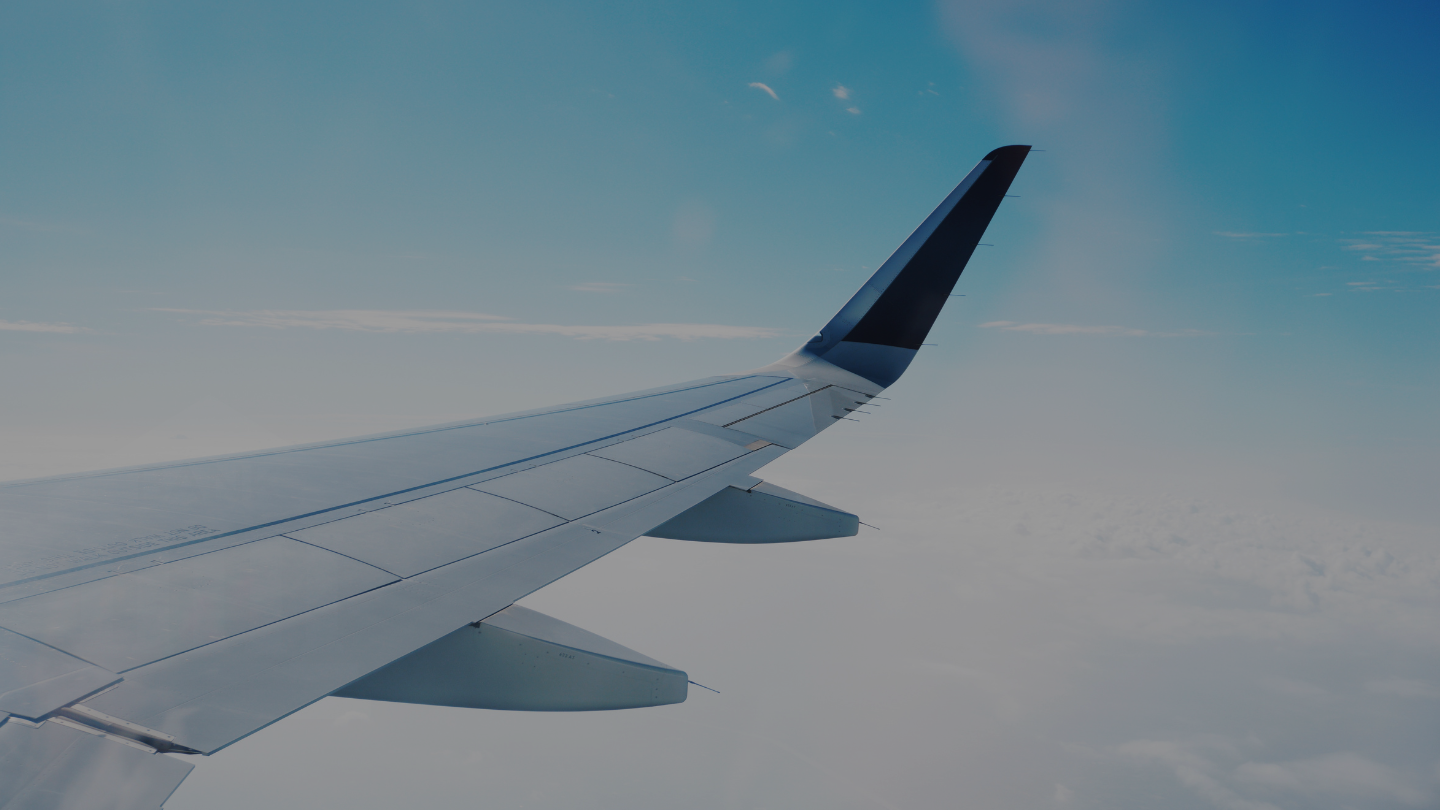Go Air Insolvency in India: A Comprehensive Examination

INTRODUCTION
Established in 2005 by the Wadia Group, Go Air, later rebranded as Go First, entered the Indian aviation sector as a low-cost carrier, aiming to provide affordable air travel to the rapidly expanding middle class. The airline was built on a business model that focused on operational efficiency, a streamlined fleet, and competitive pricing. However, despite its early success, Go Air faced mounting financial difficulties that ultimately led to its insolvency.
The airline’s struggles were exacerbated by supply chain disruptions, particularly engine shortages that led to the grounding of a substantial part of its fleet. In addition, market conditions, rising operational costs, and growing competition from stronger players, including IndiGo and Air India, put immense pressure on Go Air’s financial health. In May 2023, after facing severe liquidity constraints and operational roadblocks, the airline filed for voluntary insolvency under Section 10 of the Insolvency and Bankruptcy Code (“IBC”). The decision to seek insolvency protection ignited several legal and regulatory debates, particularly regarding the rights of creditors, aircraft lessors, and the broader implications for the aviation industry in India. This article examines the events leading to Go Air’s insolvency, the legal conflicts that emerged during the resolution process, the consequences for various stakeholders, and the lasting impact on the aviation sector.
FINANCIAL CHALLENGES LEADING TO INSOLVENCY
The fate of Go Air is linked to a whole web of inter-related factors, top among them the shortage of engines from Pratt & Whitney, the supplier of its fleet. The carrier operated its fleet of A320neo aircraft such as the A21XLR which relied on the American aerospace company engines. The global supply chain constraints and manufacturing defects caused a large part of Go Air’s fleet to remain grounded, and revenue plummeted. With no operational aircraft, the airline was unable to generate sufficient cash inflow to cover its fixed costs, including lease payments, employee salaries and fuel costs. In addition to supply chain challenges, Go Air had operational inefficiencies that it could not address to maximize financial performance. The restructured airline was still unable to remain profitable owing to poor route planning and failure to fully exploit the unbelievable asset base with which it was endowed, not to mention the fact that it had to suffer the consequences of an ill-conceived pricing strategy. Unlike its rival, which diversified revenue streams and got out quickly into the market, Go Air never could make it to the top.
The Indian aviation industry is known for its cut-throat price wars and very thin margins. Airlines routinely undercut each other to win over travellers, even at the expense of profitability. That meant Go Air would not be able to pass on increased fuel prices, foreign exchange fluctuations and maintenance costs to customers, lest risk losing market share. An unsustainable debt load added to the financial strain, leading the airline into insolvency.
TIMELINE OF KEY EVENTS
May 2023: Go Air sought to enter voluntary insolvency under Section 10 of the IBC, blaming operational and financial troubles. The plea was admitted promptly by the National Company Law Tribunal, New Delhi (“NCLT”), which initiated the Corporate Insolvency Resolution Process (“CIRP”). This decision provided the airline with a temporary lifeline by imposing a moratorium on all legal proceedings and financial claims against it.1Company Petition No. (IB)-264(PB)/2023, Order Delivered On: 10 May 2023
June 2023: Attempts continued to identify prospective investors and restructuring proposals that might have salvaged the line. Efforts to negotiate with stakeholders such as creditors and lessors were complicated. Even lessors opposed the insolvency proceedings, wanting to reclaim their planes under international aviation laws. Meanwhile, banks and other financial creditors were anxious about recovering their dues of more than ₹6,200 crore.2264/PB/2023, Order Delivered On: 15 June 2023
August 2023: The NCLT granted an extension to the CIRP, allowing more time for the resolution professional to explore viable revival plans. Despite these efforts, the airline continued to face operational challenges, including the repossession of aircraft by lessors and a decline in passenger confidence.
October 2023: The resolution professional submitted a report indicating the lack of feasible revival plans and recommended liquidation. The Committee of Creditors (“CoC”) reviewed the report and voted in favour of liquidation, citing the absence of viable proposals and the mounting financial liabilities.
January 2025: NCLT issued an order regarding the liquidation of Go Airlines (India) Limited under Section 33(2) of the IBC, 2016.3I.A. (Liq.) 33/ND/2024 in CP IB – 264/PB/2023, Order Delivered On: 20 January 2025 The application for liquidation was filed by Mr. Shailendra Ajmera, the Resolution Professional (“RP”), following a unanimous decision by the CoC in its 37th meeting held on 23 July 2024. The decision was based on the failure to secure a viable resolution plan that met the mandatory requirements of the IBC and was commercially acceptable to the CoC.
The insolvency process for Go Airlines commenced on 10 May 2023, upon an application under Section 10 of the IBC, leading to the appointment of an Interim Resolution Professional (“IRP”), Mr. Abhilash Lal. He was subsequently replaced by Mr. Ajmera as RP through an order dated 15 June 2023. Despite public announcements inviting claims, the insolvency resolution process did not yield a suitable resolution plan. Consequently, the CoC resolved to liquidate the company.
The estimated liquidation cost of INR 21.6 crores was agreed to be funded by the CoC members according to their voting share. Additionally, the CoC approved litigation funding from Burford Capital under a Capital Provision Agreement (“CPA”) to cover costs related to arbitration at the Singapore International Arbitration Centre (“SIAC”). The funding arrangement was crucial given the estimated litigation cost of approximately INR 167 crores. However, the NCLT did not approve the CPA’s key terms, ruling that foreign third-party litigation funding was not within its purview to evaluate.
The NCLT observed that the CoC had exercised its commercial wisdom in opting for liquidation, a decision that is not to be interfered with judicially unless found arbitrary. The 39th CoC meeting, held on 4 November 2024, saw the replacement of the initially proposed liquidator, Mr. Ajmera, with Mr. Dinkar T. Venkatasubramanian, in line with an Insolvency & Bankruptcy Board of India (“IBBI”) circular advising against appointing the same individual as both RP and liquidator. The NCLT ordered Go Airlines’ liquidation with specific directives, including the cessation of the previous moratorium under Section 14 of the IBC and the commencement of a fresh moratorium under Section 33(5). The order instructed the new liquidator to proceed as per Chapter III of Part II of the IBC, submit a preliminary report within 75 days, and continue investigating the company’s financial affairs. Additionally, the CoC was directed to settle the RP’s remuneration and expenses in compliance with the IBC.
With the CoC’s unanimous approval, the liquidation of Go Airlines (India) Limited was formally sanctioned, marking the final step in the company’s insolvency proceedings. The order was communicated to relevant regulatory bodies, including the Registrar of Companies and the IBBI ensuring adherence to statutory requirements.
FILING UNDER SECTION 10 OF IBC: STRATEGIC OR NECESSARY?
Insolvency resolution process under the IBC can be initiated by a “corporate applicant” under Section 10 of IBC. For the purpose of the IBC, a corporate applicant means the corporate debtor, a member or partner of that company, or any person controlling its operations or financial affairs as under Section5(5) of the IBC4Section 5, Definition, The Insolvency and Bankruptcy Code, 2016. Thus, this clause allows a company to take the initiative to trigger the CIRP when it realizes that it is facing extended financial stress.5Section 10, Initiation of corporate insolvency resolution process by corporate applicant, The Insolvency and Bankruptcy Code, 2016. Section 10 seeks to come to the rescue of corporate debtors at the earliest possible moment and allow them to cure their insolvency (an extremely important and often neglected aspect). It has commonalities with voluntary winding up but works in the creditor-controlled insolvency resolution framework prescribed by the IBC. The NCLT has a sheltering jurisdiction, which means that if a company moves to the NCLT at the right time, it can stop the financial situation of the company from worsening, and the debts, interest costs, and working capital will not be accumulated.
Filing early under this section can protect the business’s salvage value and limit financial loss for stakeholders. On admission of application, the Adjudicating Authority initiates CIRP and provides for a moratorium under section 14 of IBC6Section 14, Moratorium, The Insolvency and Bankruptcy Code, 2016. This moratorium stays all legal proceedings, suits, and recovery against the corporate debtor during resolution process. Furthermore, Section 14(2) prohibits the suspension of essential goods or services supplied to the corporate debtor (as delineated in Regulation 32 of the Insolvency Resolution Process for Corporate Persons Regulations, 2016).
Further, Section 10 also empowers a Corporate Debtor to apply for appointment of IRP as per Section 10(3)(b) of the IBC. This process is filed along with the application and on its appointment, the IRP is responsible for managing the assets of the corporate debtor to maintain their operations and to maximize the value. The IRP additionally the authority to appoint professionals including accountants and legal advisors and exert contracts on behalf of the corporate debtor. Under Section 10 of the IBC, a corporate debtor unable to repay owed financial dues may go for initiation of insolvency proceedings voluntarily. Invoking the provision for ‘pre-pack’ on its own by Go Air was unprecedented in the Indian aviation industry and raised important issues of whether disruptions in terms of operations, as opposed to pure defaults in financials, either should incur insolvency claims or on what basis.
A major legal question emerged about whether supply chain problems like engine shortages could be considered a legitimate reason for voluntary insolvency. Critics said allowing companies to access the IBC to address operational disruptions could lead to abuse of insolvency law to allow distressed firms to run away from creditor actions even as they sought some interim legal protections. In addition, Go Air’s strategy seemed to be directed towards exploiting the automatic moratorium under Section 14 of the IBC. This prevented aircraft lessors from retaking their leased aircraft, and thus protecting the airline from the financial hits of its defaults. This method was rigorously disputed in judicial forums which brought out the dire requirement for a sectoral legislation for the aviation industry.
THE DELHI HIGH COURT STAND: DELHI HIGH COURT UPHOLDS AIRCRAFT LESSORS’ RIGHTS,
DIRECTS DGCA TO DEREGISTER GOAIR’S LEASED AIRCRAFT
The Delhi High Court delivered a significant judgment7Accipiter Investments Aircraft 2 Ltd. v. Union of India, 2024 SCC OnLine Del 3125 in a case involving the Directorate General of Civil Aviation’s (“DGCA”) refusal to process deregistration applications for fifty-four aircraft leased to GoAir. The petitioners, comprising multiple aircraft lessors, had leased these aircraft to GoAir under separate agreements. Due to continuous non-payment of lease rentals, the lessors issued default notices to GoAir and subsequently terminated the lease agreements between 2 & 4 May 2023. Following the termination, they submitted deregistration requests to DGCA under Rule 30(7) of the Aircraft Rules, 1937. However, before the applications could be processed, GoAir initiated insolvency proceedings before the NCLT under Section 10 of the IBC, which led to the imposition of a moratorium on GoAir’s assets under Section 14(1) of the IBC. Citing this moratorium, DGCA rejected the deregistration requests on 11,12 & 19 May 2023, prompting the petitioners to challenge this decision before the High Court.8Arushi and Ridhi (2024a) ‘inconvenience of specific party cannot outweigh statutory provisions’; Delhi High Court directs DGCA to process deregistration of 54 leased Go air Aircrafts, SCC Times. Available at: https://www.scconline.com/blog/post/2024/04/30/dhc-directs-dgca-to-process-deregistration-of-54-leased-goair-aircrafts- scctimes/ (Accessed: 04 February 2025). Justice Tara Vitasta Ganju, presiding over the case, emphasized that while GoAir’s continued operations would be severely impacted by the return of the aircraft, this could not be a valid defense against deregistration. The Court noted that the Cape Town Convention and Protocol, to which India is a signatory, impose obligations on the country to ensure smooth deregistration of aircraft upon lease termination. The delay in deregistration had already caused India’s compliance rating under the Convention to drop from 3.5 to 2 out of 5, potentially affecting future leasing and investment in the aviation industry. The Court observed that the inconvenience faced by a single airline could not outweigh statutory provisions and international treaty obligations.
In its detailed analysis, the Court ruled that NCLT’s jurisdiction was confined to matters arising out of the IBC and did not extend to overriding regulatory functions of government authorities like the DGCA. It clarified that the aircraft did not form part of GoAir’s assets since they were leased and not owned by the airline. The termination of the leases predated the insolvency commencement order, meaning the aircraft were not in GoAir’s possession at the time the moratorium was imposed. Therefore, the moratorium under Section 14(1)(d) of the IBC was not applicable to these aircraft. The Court further relied on the precedent set in Tata Consultancy Services Ltd. v. SK Wheelers (P) Ltd9Tata Consultancy Services Ltd. v. SK Wheelers (P) Ltd, (2022) 2 SCC 58., ruling that the lease termination did not “arise out of” or “relate to” insolvency, and thus, Section 60(5) of the IBC, which gives NCLT exclusive jurisdiction over insolvency-related matters, did not apply. The Court also referenced the Ministry of Corporate Affairs (“MCA”) notification issued on 3 October 2023, which clarified that aircraft, aircraft engines, and airframes were outside the scope of the IBC moratorium. Applying the principles from Zile Singh v. State of Haryana10Zile Singh v. State of Haryana, (2004) 8 SCC 1, it held that this notification was a curative measure to rectify an existing legal gap. Given India’s commitment under the Cape Town Convention, the Court ruled that DGCA had no discretion in processing deregistration applications once the lease had been terminated. Since DGCA had not identified any deficiencies in the lessors’ applications, it was bound to deregister the aircraft.
Accordingly, the Court set aside DGCA’s rejection of the deregistration requests and directed it to process the applications within five working days. It further ordered that all maintenance responsibilities for the aircraft be undertaken by the lessors and their authorized representatives until deregistration and export were completed. To facilitate this, DGCA and the Airport Authority of India were directed to grant access to the lessors and their representatives at the airports where the aircraft were parked. Additionally, the Court instructed GoAir’s Resolution Professional to provide the lessors with updated documentation related to the aircraft within fourteen days. To prevent any interference, the Court restrained GoAir and its directors, employees, and representatives from accessing, operating, or removing any parts, accessories, or documents from the aircraft. A Special Leave Petition (“SLP”) was filed before the Supreme Court challenging the order of the Delhi High Court by the Resolution Professional of Go Airlines India Ltd.11Go Airlines India Ltd. v. SMBC Aviation Capital Ltd., SLP (C) Nos. 16762-16769/2023, Order 7th August 2023 The Supreme Court in its order dated 7th August 2023 declined to entertain the appeal, thereby upholding the Delhi High Court’s ruling, which allowed various lessors to inspect and undertake interim maintenance of their leased aircraft currently in possession of Go First.
This landmark ruling reaffirmed that regulatory obligations and international commitments cannot be overridden by insolvency proceedings. By ensuring that the DGCA complied with its statutory duty, the Court not only upheld India’s international aviation commitments but also sent a strong message about protecting the interests of aircraft lessors, thereby reinforcing confidence in India’s aviation leasing industry.12ZBA (2024) “The Delhi High Court directs deregistration of go Air Aircraft despite insolvency ChallengesTop of form, Insolvency/Bankruptcy – India.” Available at:https://www.mondaq.com/india/insolvencybankruptcy/1472050/the-delhi- high court-directs-deregistration-of-go-air-aircraft-despite-insolvency-challengestop of-form#_ftn1 (Accessed: 01 February 2025) including the Specific Relief Act, 1963, the Code of Civil Procedure, 1908, and the Companies Act, 2013. The Cape Town Convention Bill, 2018, intended to align Indian law with the Cape Town Convention, has yet to be passed by Parliament, leaving India’s compliance with this international framework in uncertainty.13Velaga, T. and Gupta, A. (2024) ‘Airline Insolvency in India: balancing interests between the Insolvency and Bankruptcy Code and the Cape Town Convention’ , NUJS Law Review, 17(1). Available at: https://nujslawreview.org/wp- content/uploads/2024/07/17.1-Velaga-Gupta.pdf (Accessed: 31 January 2025)
JUDICIAL CONFLICTS: MORATORIUM VS. CAPE TOWN CONVENTION
A central legal issue in Go Air’s insolvency was the conflict between the IBC moratorium and the Cape Town Convention. India is a signatory to this international treaty, which grants aircraft lessors the right to repossess aircraft in the event of payment defaults. However, the IBC’s moratorium provision prevented such repossessions, creating a legal deadlock.14 Ibid Lessors argued that their rights under the Cape Town Convention should override domestic insolvency laws, allowing them to recover aircraft immediately upon default. However, the NCLT and NCLAT initially ruled in favour of the moratorium, emphasizing that domestic insolvency proceedings took precedence. This created uncertainty for international aircraft lessors, discouraging future investments in India’s aviation sector.15Sharma, Dr. D. et al. (2024) ‘An Analysis of Go First Airlines: A Case Study on Voluntary Insolvency Resolution in the Aviation Industry’, Journal of Informatics Education and Research, 4(2). Available at: https://jier.org/index.php/journal/article/view/826#:~:text=In%20the%20midst%20of%20a%20difficult%20situation%2C %20this,Airlines%2C%20a%20major%20lowcost%20carrier%20in%20India%2C%20undertook. (Accessed: 30 January 2025).
Following months of legal battles, the Indian government issued a notification16MCA Notification No. SO-4321(E), F. No. Insol-30/9/2020-Insolvency-MCA, dated 03 October 2023 Ministry of Corporate Affairs on 3 October 2023, exempting leased aircraft from the moratorium under Section 14(1) of the IBC. This move sought to restore investor confidence and align India’s insolvency laws with international aviation finance standards. However, it also raised concerns about the inconsistent application of insolvency laws across different industries.




